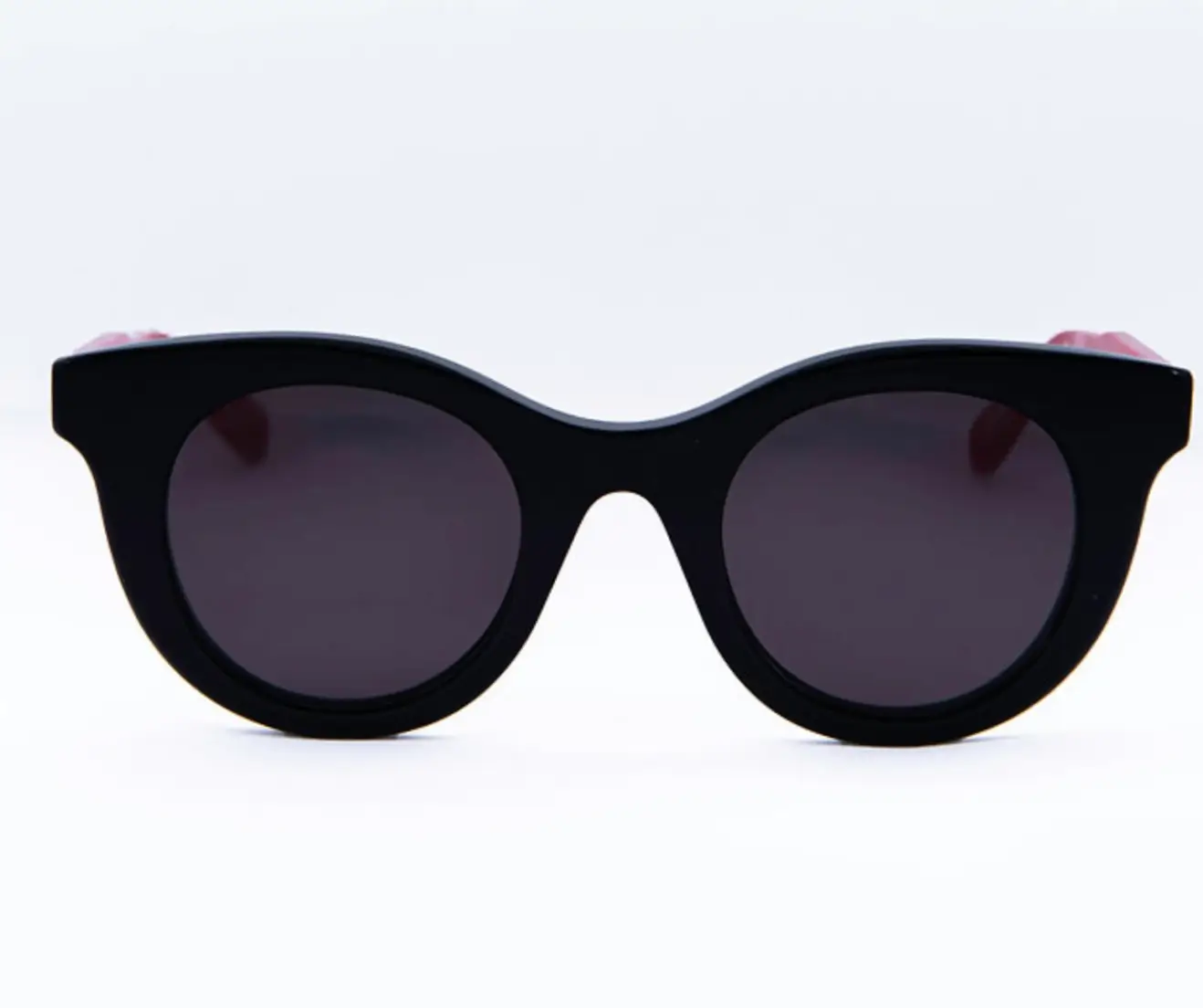In the evolving landscape of modern fashion, few designers manage to balance heritage, craftsmanship, and relevance as gracefully as Wynn Hamlyn. His work sits between the quiet rhythm of artisanal design and the sharp tempo of modern utility — a duality embodied perfectly in pieces like the hand-woven structured tote pictured above. Meticulously constructed from natural fibres and accented with earthy wooden beads, this bag exemplifies Hamlyn’s aesthetic language: considered, organic, and steeped in subtle complexity.
flow
Founded in 2014 by New Zealand designer Wynn Hamlyn, the eponymous label emerged from an interest in how clothes can mediate between comfort and construction. His earliest collections reinterpreted traditional knitting techniques, re-imagining them in sculptural silhouettes. Over time, the brand evolved beyond knitwear, introducing tailoring, outerwear, and accessories — yet always retaining the artisanal pulse that defined its early identity.
Hamlyn’s upbringing amid New Zealand’s natural landscapes shaped his material sensibility. The country’s volcanic coastlines and deep green bushlands frequently inform his palettes: muted clay, bone, moss, charcoal. He treats design as both geography and memory — drawing from the tactility of rope, timber, and woven grass to ground his fashion in physical craft.
craft
The woven bag exemplifies Hamlyn’s ongoing dialogue between the handmade and the refined. Its structure recalls the Pacific tradition of flax weaving, translated through a contemporary lens using durable wicker and leather cord. The composition juxtaposes two tones: deep espresso black and pale sand — mirroring the volcanic and coastal contrasts of New Zealand terrain.
The finishing detail — polished mahogany beads strung across the mid-section and tied into the leather drawstring — bridges fashion ornamentation with craft ritual. It’s decorative yet symbolic, evoking rosary knots and traditional waist cords. Each bead, each knot, carries the mark of deliberate human touch, resisting the homogeneity of machine precision.
Hamlyn’s woven accessories, like his garments, are not nostalgic replicas of folk craft. They are dialogues: between urban polish and rural method, between the digital tempo of global fashion and the slow rhythm of the handmade. In doing so, Wynn Hamlyn reinserts emotion into structure — a kind of fashion that feels “lived in,” even when brand new.
design
In Wynn Hamlyn’s universe, line and form do more than flatter; they narrate. His pieces often reveal construction as decoration — visible seams, hand-crocheted joints, macramé ties. The woven bag continues that principle in object form. Its silhouette is deceptively simple: rectangular base, slightly flared opening, braided handles. Yet within that simplicity lies compositional harmony.
The bag’s structure is divided into visual thirds — dark base, beaded midline, pale upper. This ratio mimics architectural grounding: stability at the bottom, openness at the top. The braided handles, rather than stitched leather straps, reinforce his appreciation for tactile continuity. They rise organically from the body of the basket, as if grown from it.
Even the spacing between weaves matters. The slightly uneven tension gives texture — evidence of craftsmanship that transforms a utilitarian object into sculpture. It’s the same design thinking behind Hamlyn’s clothing, where elastic cords gather wool dresses or metallic clasps cinch knit tops. Every detail, visible or concealed, is purposeful.
new zealand
Wynn Hamlyn stands among a new generation of Antipodean designers—including Maggie Marilyn and Paris Georgia—who challenge the notion of remoteness. Their work situates New Zealand not as peripheral but as pioneering in sustainable, artisanal design. Hamlyn’s commitment to locally sourced materials and small-batch production aligns with a broader movement redefining luxury as transparency and intimacy rather than excess.
His collections often debut at New Zealand Fashion Week but reverberate globally through digital storytelling and boutique retailers in Japan, the UK, and the US. The woven bag typifies his cross-market appeal: recognizably hand-made, yet adaptable to urban wardrobes. It can appear at a farmers’ market or an art fair, in a minimalist studio or a coastal retreat — always relevant, never loud.
show
Beyond aesthetics, Hamlyn’s design ethos resonates deeply with the slow-fashion philosophy. Each piece invites long-term use and emotional attachment. Natural rattan, wicker, or flax — the core materials of his woven line — are biodegradable and renewable. The wooden beads are often sourced from FSC-certified wood, while the cords derive from vegetable-tanned leathers or plant-based polymers.
For Hamlyn, sustainability is not a branding device but a design condition. By keeping production small and techniques traditional, he ensures minimal waste and maximal authenticity. The result is fashion that feels both timely and timeless — resisting seasonal obsolescence.
theme
Holding a Wynn Hamlyn accessory evokes the same calm precision as viewing an architectural model or a Japanese ikebana arrangement. There’s a meditative quality in his proportional balance, an emotional tactility in his material pairings. The black and ivory weaves aren’t simply colour choices; they represent light and shadow, the eternal contrast of creation and erosion in nature.
The circular knot at the bag’s front — where the leather cord loops through itself — becomes a visual metaphor for continuity. It’s a gesture of unity, connecting two halves through tension. The beads dangling from the cords swing slightly as one walks, introducing subtle movement to an otherwise rigid form. This interplay of stillness and motion recurs throughout his collections: draped fabrics anchored by cords, fitted dresses with shifting pleats, textures that come alive in motion.
culture
In a cultural moment oversaturated with logo-driven identity, Wynn Hamlyn’s refusal to rely on branding is refreshing. His woven bag bears no visible emblem, yet its craftsmanship makes it instantly recognizable. It speaks to an emerging aesthetic of quiet confidence — where individuality is expressed not through ostentation but through intimacy with material.
Collectors and stylists have embraced his work for precisely this reason. It photographs beautifully — the interplay of shadow and texture suits editorial spreads — but it also functions in daily life. The bag is light, resilient, and timeless, equally at home in Auckland, Tokyo, or Copenhagen.
fwd
As Hamlyn expands his accessories range, this basket serves as a blueprint for what modern craft can be: tactile yet contemporary, nostalgic yet new. Future iterations may explore coloured resin beads, metallic fibres, or collaborations with indigenous weavers. Yet the essence will remain — balance, restraint, and storytelling through texture.
In the broader design conversation, Wynn Hamlyn stands as a reminder that progress doesn’t always mean futurism. Sometimes it means returning to touch, to patience, to the rhythm of the hand. His woven tote encapsulates that truth perfectly: a handmade object carrying modern life’s essentials, yet whispering the language of tradition.
impression
The Wynn Hamlyn woven tote is more than an accessory — it’s a thesis on contemporary craft. Each weave, bead, and knot encapsulates the brand’s ethos: merging artisanal intimacy with architectural clarity. It invites us to slow down, to appreciate the quiet drama of material and form, and to rediscover the beauty of things made with time rather than haste.
In an era defined by excess, Hamlyn’s restraint feels radical. His bag doesn’t shout; it hums — with texture, memory, and design intelligence. It is at once humble and luxurious, practical and poetic — a true emblem of twenty-first-century craftsmanship.
No comments yet.








